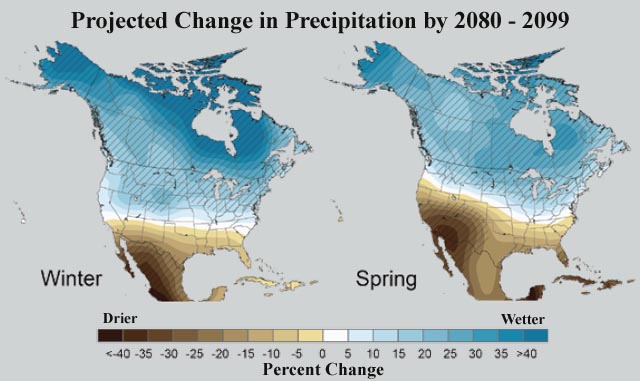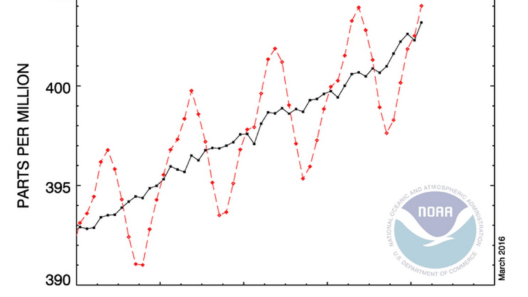Global warming stands as one of the most formidable challenges confronting humanity today. As our planetary thermostat rises, particularly in the U.S., the ramifications permeate all facets of life, from ecosystems and agriculture to public health and infrastructure. Understanding the ticking clock of climate change necessitates an examination of the timeline and potential future scenarios that accompany this existential crisis.
The trajectory of global warming is strikingly evident when we scrutinize historical data and projected climate models. The U.S. has experienced a temperature increase of approximately 1.8°F (1.0°C) since the beginning of the 20th century. While this may seem trivial, such incremental shifts in temperature hold profound implications. Each fraction of a degree contributes to a complex interplay of climate feedback loops involving greenhouse gas emissions, ice melt, and changes in solar absorption. This upward trend is not a vague notion but a clear harbinger of tumultuous changes ahead.
Livelihoods across the nation are already being impacted by significant climate phenomena. Extreme weather events—hurricanes, floods, and wildfires—have escalated in frequency and intensity. The notion of a “once-in-a-lifetime” storm is becoming a relic of the past. Economists predict that without immediate intervention, the cost of climate-related damages could soar into the hundreds of billions annually by 2050. With urban centers swelling in population and requiring robust infrastructure, a resilient response to climate change must be a priority. Yet, evidence suggests that our current trajectory is untenable.
So, what does the impending future hold? A series of global warming scenarios are outlined based on varying levels of greenhouse gas emissions. The Intergovernmental Panel on Climate Change (IPCC) delineates pathways that range from severe to catastrophic based on our collective action—or inaction. These scenarios serve as a blueprint for understanding the urgency of the situation.
In the next decade, we may witness a marked increase in climate-related migration. As certain areas become inhospitable—due to either flooding, drought, or other climatic aberrations—communities will likely be uprooted. The concept of “climate refugees” will no longer be a theoretical idea but a tangible reality. Such displacements pose challenges not only to affected individuals but also to receiving locations that may struggle to accommodate sudden influxes of population, straining resources and political stability.
By 2030, projections indicate that the U.S. will experience significant shifts in agricultural productivity. The Midwest, often hailed as America’s breadbasket, could face declining yields as unpredictable weather patterns disrupt planting and harvesting cycles. Conversely, some regions may see a temporary boon from warmer temperatures; however, this too is fraught with uncertainty and will likely be offset by an increase in pests and diseases, requiring agricultural adaptations that may not be feasible for all farmers.
Public health is another crucial aspect of this evolving narrative. The increased prevalence of heatwaves can exacerbate existing health conditions, disproportionately affecting vulnerable populations, including the elderly and those with underlying health issues. Additionally, vector-borne diseases, such as Lyme disease and West Nile virus, are projected to proliferate in areas previously unexposed to such hazards. This shift underscores the interconnectedness of climate and public health—a dimension of the climate change discussion that warrants more attention.
As we extend our timeline further, to the mid-century, we encounter even more alarming outcomes. The increasingly chaotic nature of the weather may lead to severe water shortages in various parts of the country, exacerbating tensions over water rights and leading to greater regional conflicts. This reality necessitates urgent investment in sustainable water management and conservation practices.
Moreover, rising sea levels—estimated to increase by three to six feet by 2100—will have a cataclysmic impact on coastal communities. Cities such as Miami, New Orleans, and New York will need to grapple with the ramifications of encroaching waters. The phenomenon of “sunny day flooding,” driven by high tides during calm weather, offers a glimpse into a future where coastal living is sharply contrasted with peril. Preparing for such eventualities requires coordinated policy efforts focused on resilient infrastructure and community preparedness.
Ultimately, by 2100, the cumulative effects of these changes will paint a stark picture of the U.S. if robust measures to combat climate change are not prioritized. Moreover, future generations will inherit a planet that may far exceed current thresholds of risk and instability. The earth’s delicate balance, once disturbed, may not easily revert to its former state. The notions of sustainability and stewardship will require not just awareness but actionable policies and transformative social movements.
The ticking clock of global warming challenges us to reframe our mindset. Climate change is not a distant problem but a present-day crisis. The steps we take today—from individual choices to collective actions—will play a crucial role in sculpting a sustainable future. As stewards of the planet, it is our responsibility to ensure that subsequent generations can thrive, mitigating the dire forecasts by shifting our course now. Our world is at a critical junction, and the clock is ticking; the moment to act is unequivocally now.
In summation, understanding the timeline of global warming in the U.S. encourages a collective epiphany about the urgency of climate action. It piques curiosity about innovative solutions and engages citizens across demographics in an essential dialogue about our planet’s future. The paradigm shift required is immense, but with it comes the promise of resilience, adaptation, and ultimately, a sustainable future for all.








